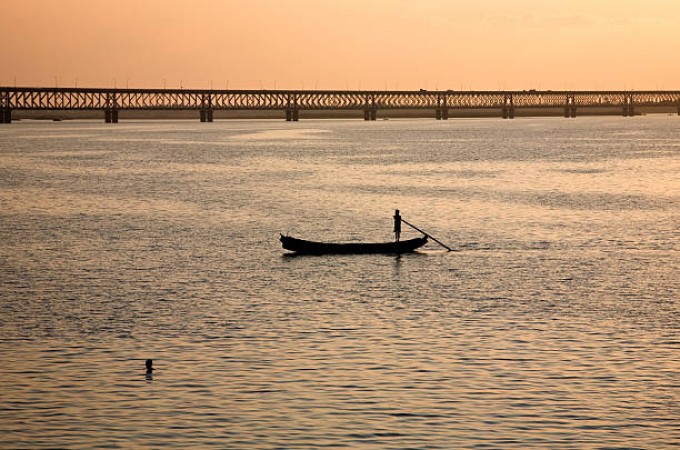
The Godavari River, often referred to as the "Ganga of the South," is one of the longest rivers in India and holds immense spiritual and cultural significance in Hinduism. With its origins in the Western Ghats of Maharashtra, the Godavari meanders through several states, leaving a profound impact on the religious and social fabric of the region. The Godavari River is a cherished symbol of divinity, purity, and devotion in Hinduism. Its mythological origins, association with revered deities, and role in grand festivals make it a revered water body among millions of followers. While environmental challenges pose a threat to the river's well-being, concerted efforts towards conservation and sustainable practices are crucial to preserve its spiritual and cultural heritage. By embracing the divine essence of the Godavari River and fostering a sense of responsibility towards its protection, we can ensure that future generations continue to find solace and inspiration in its sacred waters.
also read - Yamunotri and Gangotri: Sacred Himalayan Shrines of India
In Hindu mythology, the Godavari River is associated with various legends and divine narratives. It is believed to be the sacred river that originated from the kamandalu (water pot) of Lord Brahma, the creator of the universe. The river is mentioned in several ancient scriptures and is considered one of the seven holiest rivers in Hinduism. The Godavari's association with Lord Rama, Lord Shiva, and other deities adds to its sanctity and reverence among devotees. The Godavari River is a significant destination for pilgrims seeking spiritual solace and purification. The riverbanks are dotted with numerous temples, ghats, and sacred sites, attracting devotees from all over the country. Taking a holy dip in the Godavari during religious festivals or auspicious occasions is believed to wash away sins and bestow divine blessings. Prominent pilgrimage sites along the river include Nashik, Trimbakeshwar, and Rajahmundry, where devotees engage in prayer, perform rituals, and immerse themselves in devotion.
also read - Aghoris: Unraveling the Mystical Ascetics of India
The Godavari River is closely associated with the grand event of the Kumbh Mela, which takes place every twelve years in Nashik and Trimbakeshwar. Millions of devotees gather to participate in the holy bath, seeking spiritual enlightenment and liberation. The riverbanks come alive with colorful processions, religious discourses, and cultural performances during this auspicious gathering. Additionally, festivals like Poleramma Jatara in Andhra Pradesh and Godavari Pushkaram are celebrated with immense fervor, showcasing the river's significance in regional traditions. While the Godavari River is revered for its spiritual essence, it also faces environmental challenges. Rapid urbanization, industrial waste, and deforestation have contributed to pollution and degradation of the river's ecosystem. Various organizations, government bodies, and environmental activists are working towards its conservation. Initiatives focusing on river cleaning, afforestation drives, and awareness campaigns aim to restore the Godavari's ecological balance and protect its sacredness.
also read - The Significance of the Swastika: A Sacred Symbol in Hinduism